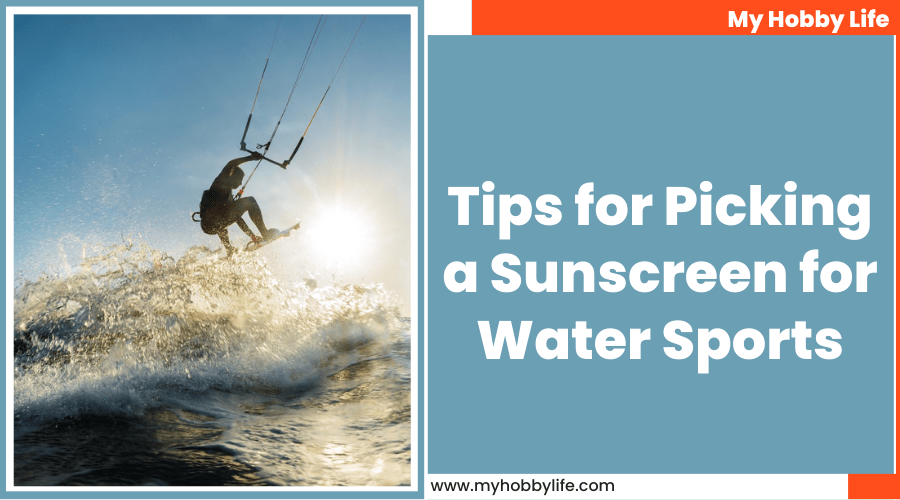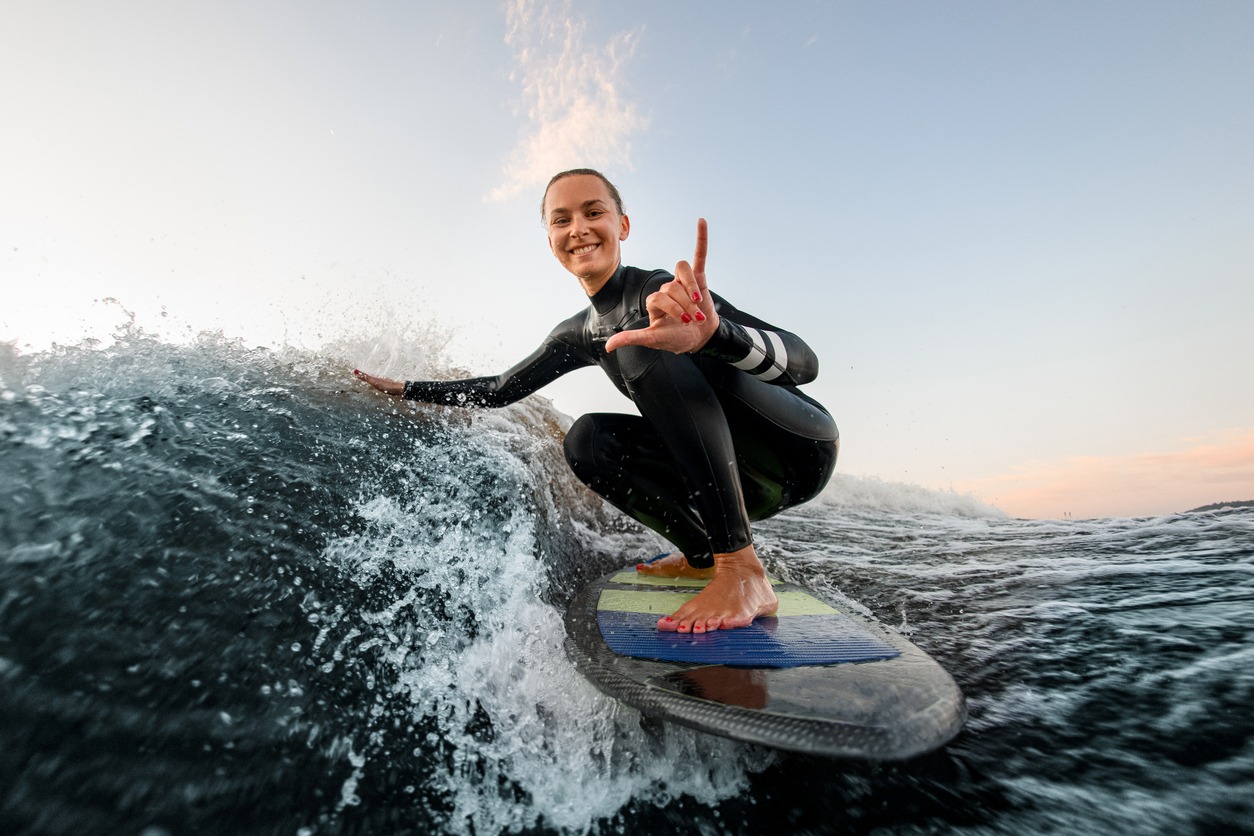Water sports like swimming, kayaking, surfing, stand up paddle boarding, snorkeling, and other activities are enjoyable which is why so many people are engaging in these types of water activities either for leisure or even competitions. These activities benefit not just our bodies but our mental health as well by allowing us to relax and unwind by the water’s sense of calm and lightness. A water sport can be a very effective way to relieve tension and stress.
As thrilling and beneficial water sports can be, these activities may also pose dangers for our skin. Water sports expose our skin to more ultraviolet radiation, direct and indirect sunlight which are the causes of sunburn, skin aging, and even skin cancer.
So if you enjoy participating in water sports, you should have a strong sunscreen that offers excellent sun protection and can withstand both the water surrounding you and the perspiration from the strenuous activity. However, choosing the best sunscreen can be quite challenging since it is available in a variety of forms, including gels, sticks, sprays, and lotions with different formulations. The sheer number of brands and options, each claiming to provide the best protection, can be pretty overwhelming.
Today, we’ll assist you in choosing the best sunscreen for your water activities.
- Find a sunscreen with a full or broad UV spectrum protection. You run a higher risk of skin cancer and sun damage if you participate in water sports. You must therefore protect yourself from both UVA and UVB rays. UVA rays have the longest wavelengths so they can penetrate our skin much more deeply. Wrinkles and other premature skin changes, such as photoaging, which makes skin appear to age early, are frequently brought on by prolonged exposure to UVA radiation. The damage frequently manifests as wrinkles, uneven skin tone, patches of darker or lighter skin, and early age spots on the hands, arms, face, back, and/or shoulders. Meanwhile, despite being shorter than their UVA counterpart, UVB rays can only penetrate as far as the surface of our skin. The bad news is that skin can be burned by short-wave UVB rays. Skin turns red and develops a painful sunburn, which eventually peels and may blister. Sunburns lead to long-term skin damage and increased risk of developing skin cancer. When engaging in water sports, it is best to that your skin is protected from UVA and UVB rays because they can both increase the risk of deadly skin cancer. To do this, look for the terms “full spectrum” or “broad spectrum” on product labels. Both types of UV radiation from the sun’s rays can’t penetrate your skin as deeply with the help of these sunscreens.
- Select the appropriate sun protection factor. A high SPF is essential when choosing an efficient product. Unfortunately, the SPF ratings we see advertised can be unclear. What do they actually mean? First, realize that SPF only refers to UVB rays; it does not describe a product’s capacity to block UVA rays. Simply put, SPF gauges how long UVB rays can be blocked from burning or reddening skin by a sunscreen. Real-world SPF performance of a product is impacted by specific factors. For people that engage in water sports, these factors could be sweat, water, your skin type, or even specific medications that make skin more sensitive to sunlight. If the formulation is not water resistant, sweat and water can wash away sunscreen no matter how high the SPF may be.
- Pick a formulation that is water-resistant. Water sports require a great deal of physical exertion and water, so you need to find a sunscreen that stays put so that your broad-spectrum protection can function properly. The best choice for this task is water-resistant sunscreen. Although there isn’t “waterproof” or “sweat-proof” sunscreen, you should be aware that the only water resistance options are for 40 or 80 minutes. On the package for these variations, “water-resistant” or “sport” will be written so you would have to look for these specifically. Many athletes use these formulations because they exercise and sweat so much outside. Water-resistant sunscreen, however, can be used by anyone who enjoys swimming or other water activities. Investing in water-resistant sunscreen is just one component of maintaining the best possible level of skin safety. That’s the other part—using it properly. Ensure that you follow the instructions on the bottle and reapply frequently if you will be in the water or perspiring for a long period of time.
- Buy separate products for face and body. For those with skin allergies, sensitive skin, or conditions like acne or rosacea, the ingredients in some sunscreens meant for the body can wreak havoc on their face. Given that every person’s skin is different, but faces are typically much more sensitive than everything below the neck, you can understand why your face needs a special product. Since faces and bodies require different formulations, manufacturers create them. It’s best to use a sunscreen designed for the softer facial skin. Numerous facial sunscreens are hypoallergenic, which makes them much gentler on skin prone to irritation than their counterparts made for the rest of the body. Now, if you find yourself in a circumstance where the body formulation is all you have available, by all means, apply it to your face than applying nothing at all. However, it is best to protect your face and body with sunscreens that are superficially formulated for them.
- Check the type of sunscreen and its ingredients. While the product’s SPF rating indicates how well it protects against UVB radiation that can burn, there are less information on UVA. How well a sunblock protects skin from those long-wave rays can be inferred from certain ingredients. Understanding that sunscreens fall into two product categories—physical and chemical—is the first step in evaluating ingredients. The differences are due to the ingredients, and some sunscreens are hybrids that use substances from both categories. Zinc oxide and titanium oxide are examples of minerals used in physical sunscreens. These are affixed to the skin’s surface and function as a physical barrier to reflect or scatter sunlight away from the skin. The fact that physical sunscreens typically cause less irritation and start working right away after application are major benefits. They sometimes leave the skin with a slight chalky finish, which is a minor drawback. Chemical sunscreens use a different strategy to block harmful UV. Incoming rays are absorbed by the gel, mist, liquid, or lotion into the skin, where they act as a shield to stop further penetration. Avobenzone, ecamsule, homosalate, octisalate, octinoxate, octocrylene, and oxybenzone are examples of common chemicals found in chemical products. These sunscreens need to be applied about a half hour before going outside for them to be effective. This gives them enough time to permeate your skin’s outer layer. For people doing water activities, you may also check out sunscreens that have moisturizing ingredients on them as the salt water and sun exposure may increase your skin’s overall dryness. Opting for multifunctional sunscreens could be the best option before diving into any water sport.
Now that we’ve covered some of the most crucial advice for picking the best sunscreens for people who participate in water sports, let’s move on to some crucial reminders on how to better apply sunscreens so that you can get the most out of them.
- There is no sweat- or waterproof sunscreen. The Food and Drug Administration forbids the use of both terms because they are deceptive on sunscreen labels. Choose a “water-resistant” sunscreen lotion if you anticipate that your family will perspire or become wet; regular sunscreen will wash off more quickly. To completely cover all exposed skin, adults should apply one ounce or more of sunscreen at once, and children should apply a similarly thick layer. Due to the fact that UVA rays can pass through water, be cautious around easy-to-miss areas like earlobes and any body part that will remain submerged, such as feet.
- There is a time limit on water-resistant sunscreens. Sunscreens that advertise being “water-resistant” must specify on the label whether they retain their efficacy for 40 or 80 minutes. After that, UV rays can harm your skin.
- Reapply, reapply, and reapply. All sunscreens need to be reapplied at least every two hours, but you should do so more frequently if you’re swimming or perspiring. Reapply your water-resistant sunscreen 40 or 80 minutes after the time it stops working. Every time you towel-dry a coat, add a new one.
- Give your sunscreen some time to work. Always apply sunscreen at least 15 minutes before going outside and exposing your skin to the sun. When dealing with water, this is especially crucial. Sunscreen can be removed by moisture before it has a chance to absorb. Whenever possible, apply sunscreen to dry skin when reapplying.
- Use additional defenses in addition to sunscreen. Sunscreen by itself is insufficient to protect against sun damage, whether you’re engaging in outdoor activities like swimming, running through sprinklers, or playing sports. Put on hats, shades, sleeves, and pants. Find some shade. Avoid the sun at noon. Sun exposure can be more intense close to water because sunlight reflects off of surfaces.
Conclusion
Water sports are undoubtedly enjoyable and thrilling activities, however, they also put you at a bigger risk for excessive sun damage and burns which could then lead to more serious skin problems or diseases such as skin cancers. Hence, it is very important to remember these steps and recommendations before diving into the water unprotected.
Sunscreens come in varied forms and uses. To maximize its benefits and protection, we have to know the type of sunscreen that works best with specific types of activities.
A word of caution: Some over-the-counter and prescription medications increase sensitivity to UV radiation in users despite sunscreen and additional clothing protections. Photosensitivity can increase a person’s skin’s susceptibility to sunburns, rashes, and blistering. Hence, it is recommended that you also consult your board-certified dermatologist for more comprehensive tips and sun protection guidelines that are tailored fit to your skin type and needs.

